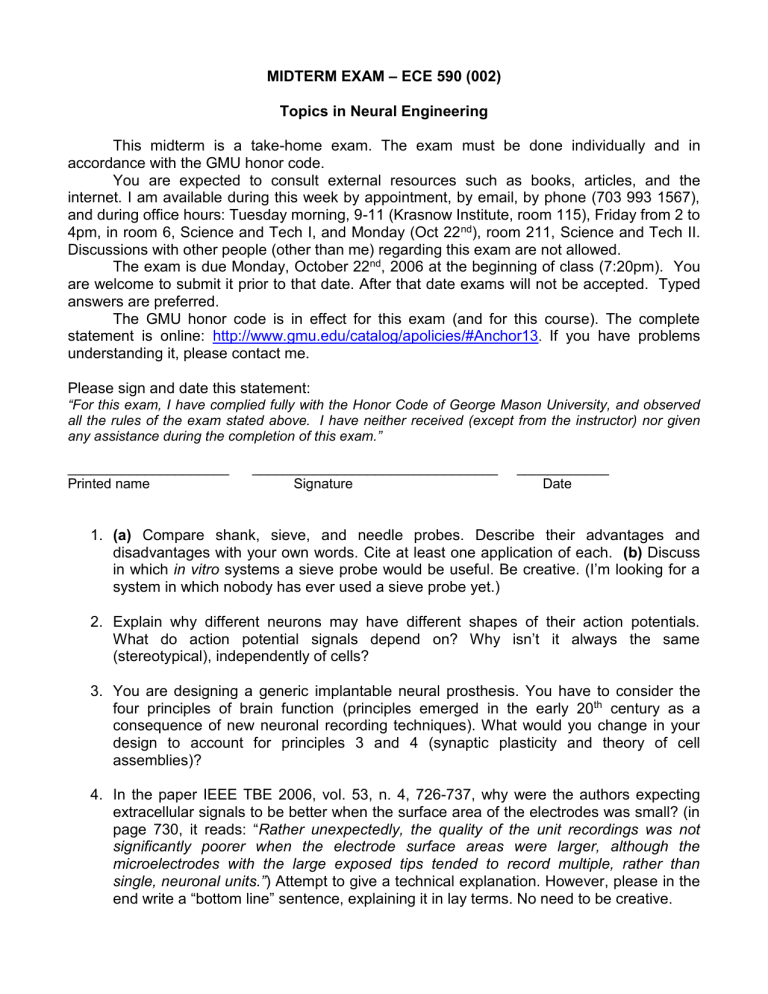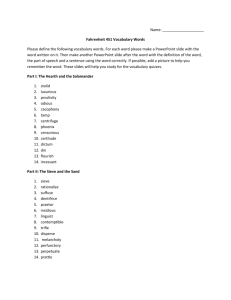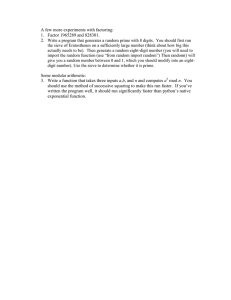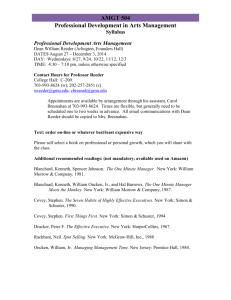Example MIDTERM

MIDTERM EXAM
– ECE 590 (002)
Topics in Neural Engineering
This midterm is a take-home exam. The exam must be done individually and in accordance with the GMU honor code.
You are expected to consult external resources such as books, articles, and the internet. I am available during this week by appointment, by email, by phone (703 993 1567), and during office hours: Tuesday morning, 9-11 (Krasnow Institute, room 115), Friday from 2 to
4pm, in room 6, Science and Tech I, and Monday (Oct 22 nd ), room 211, Science and Tech II.
Discussions with other people (other than me) regarding this exam are not allowed.
The exam is due Monday, October 22 nd , 2006 at the beginning of class (7:20pm). You are welcome to submit it prior to that date. After that date exams will not be accepted. Typed answers are preferred.
The GMU honor code is in effect for this exam (and for this course). The complete statement is online: http://www.gmu.edu/catalog/apolicies/#Anchor13 . If you have problems understanding it, please contact me.
Please sign and date this statement:
“For this exam, I have complied fully with the Honor Code of George Mason University, and observed all the rules of the exam stated above. I have neither received (except from the instructor) nor given any assistance during the completion of this exam.”
_____________________ ________________________________ ____________
Printed name Signature Date
1. (a) Compare shank, sieve, and needle probes. Describe their advantages and disadvantages with your own words. Cite at least one application of each. (b) Discuss in which in vitro systems a sieve probe would be useful. Be creative. (I’m looking for a system in which nobody has ever used a sieve probe yet.)
2. Explain why different neurons may have different shapes of their action potentials.
What do action potential signals depend on? Why isn’t it always the same
(stereotypical), independently of cells?
3. You are designing a generic implantable neural prosthesis. You have to consider the four principles of brain function (principles emerged in the early 20 th century as a consequence of new neuronal recording techniques). What would you change in your design to account for principles 3 and 4 (synaptic plasticity and theory of cell assemblies)?
4. In the paper IEEE TBE 2006, vol. 53, n. 4, 726-737, why were the authors expecting extracellular signals to be better when the surface area of the electrodes was small? (in page 730, it reads: “ Rather unexpectedly, the quality of the unit recordings was not significantly poorer when the electrode surface areas were larger, although the microelectrodes with the large exposed tips tended to record multiple, rather than single, neuronal units.” ) Attempt to give a technical explanation. However, please in the end write a “bottom line” sentence, explaining it in lay terms. No need to be creative.
5. Pick one researcher (author) whose work is directly related to your final project. The author should be a senior person in the field you are researching. After scanning some of his/her papers, write two to three paragraphs describing his/her research interests and his/her main contribution to Neural Engineering. Finally, discuss the impact of his/her work on society.
6. After considering the side effects of stimulation in the brain, in particular with implants in
STN and GPi, as described below, suggest a solution to deal with the problem, either a priori (for example, modifying the implant), or a posteriori (keep the implant the same, deal with at least one of the side effects).
[The text quoted below is from the journal Neuron , vol. 52, 197-204, October 5 th , 2006,
“ Deep brain stimulation for neurologic and neuropsychiatric disorders ”, a review by T.
Wichmann and M.R. DeLong]



